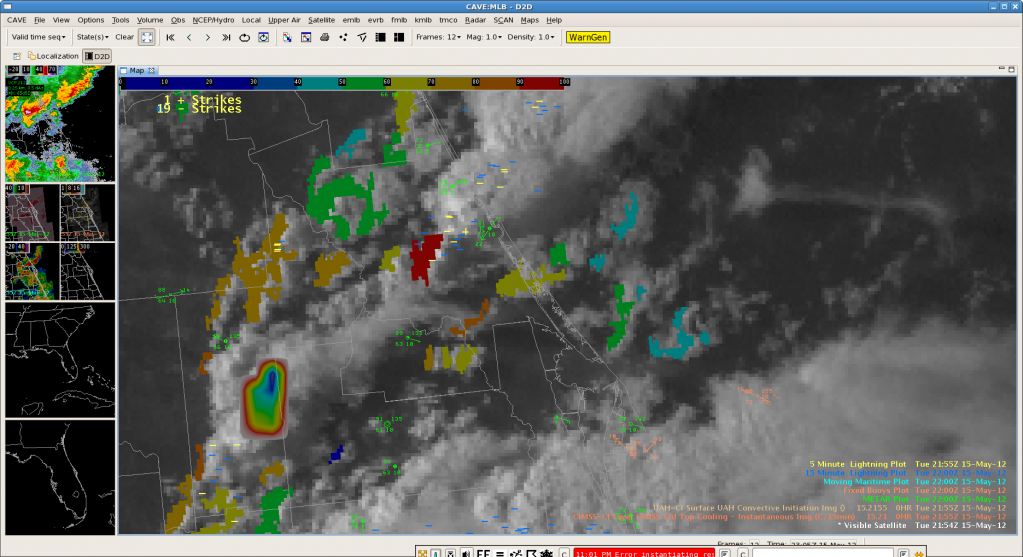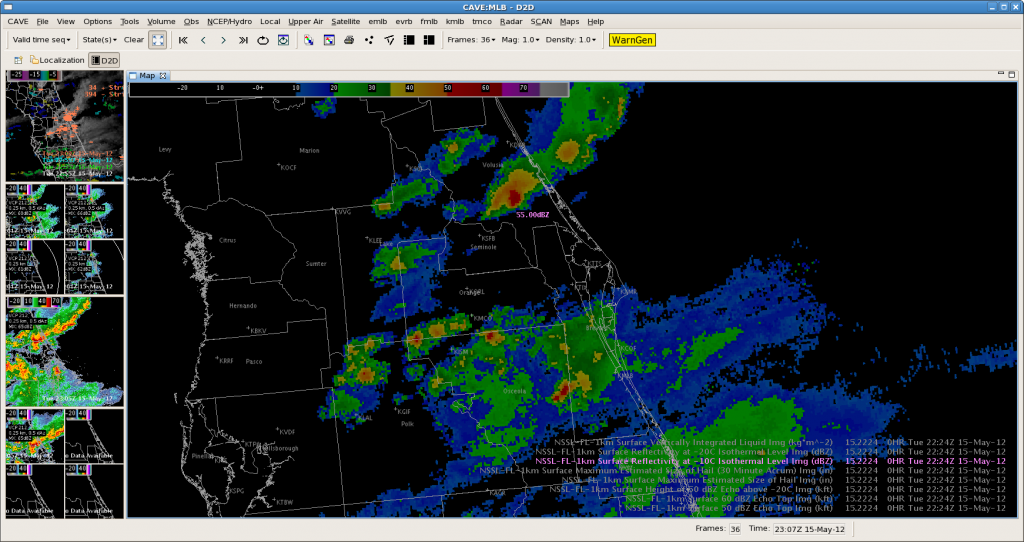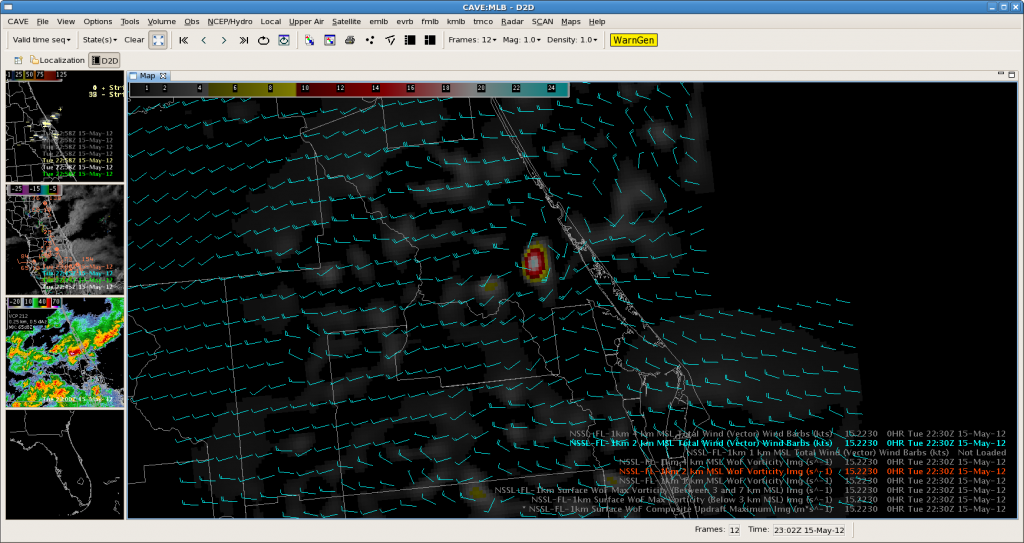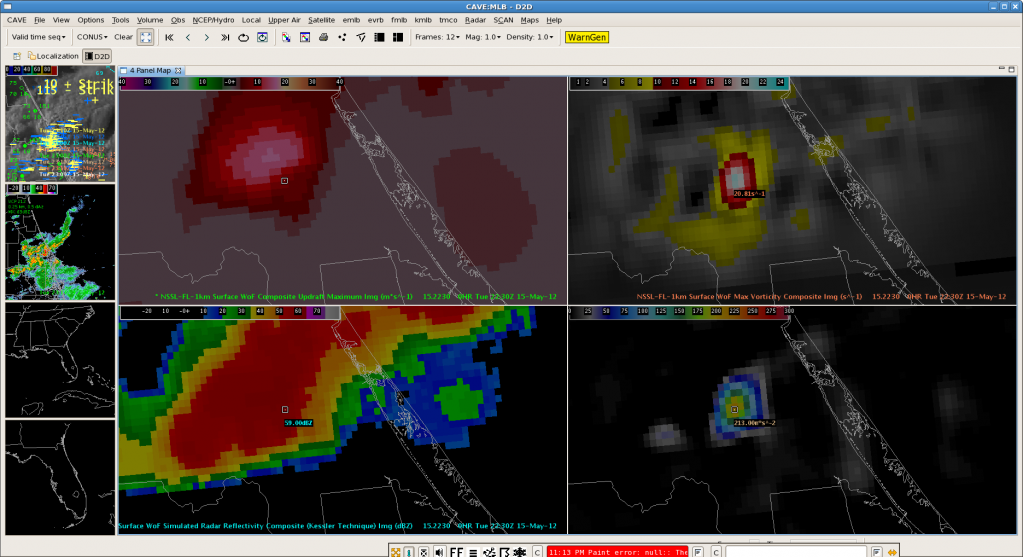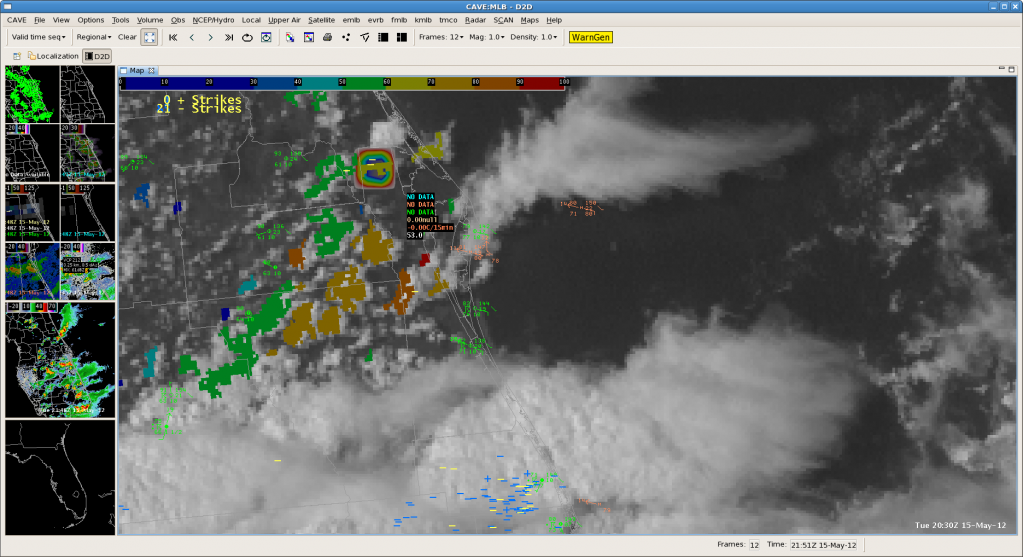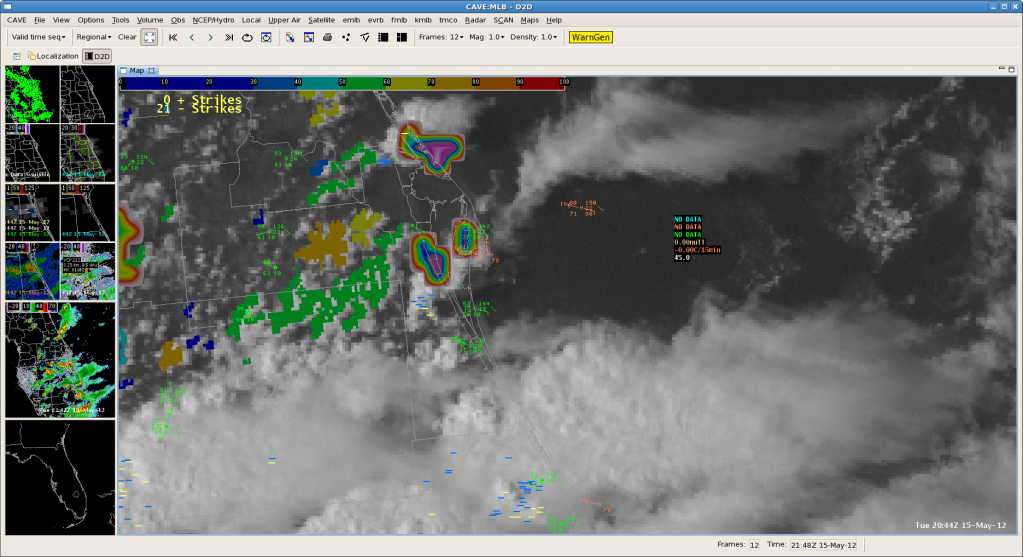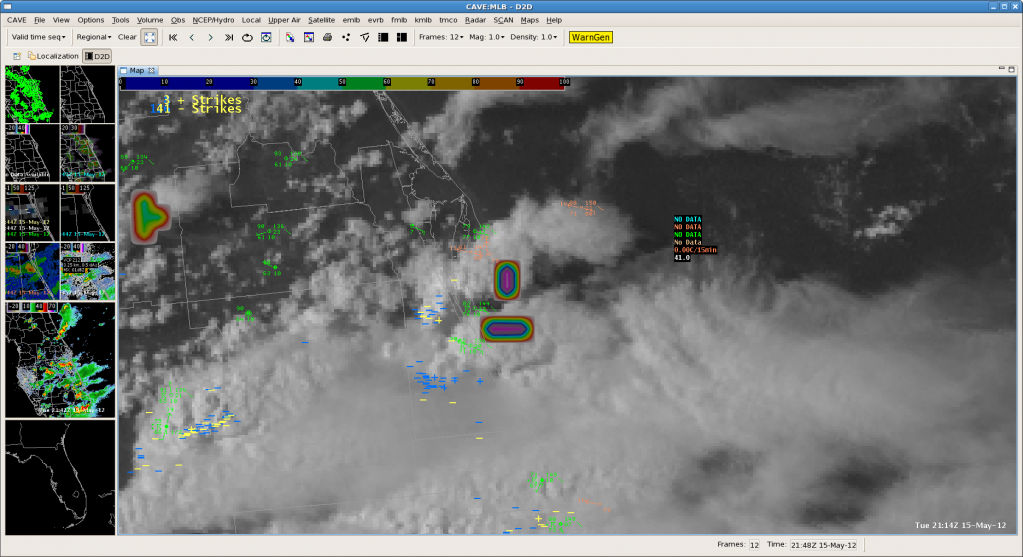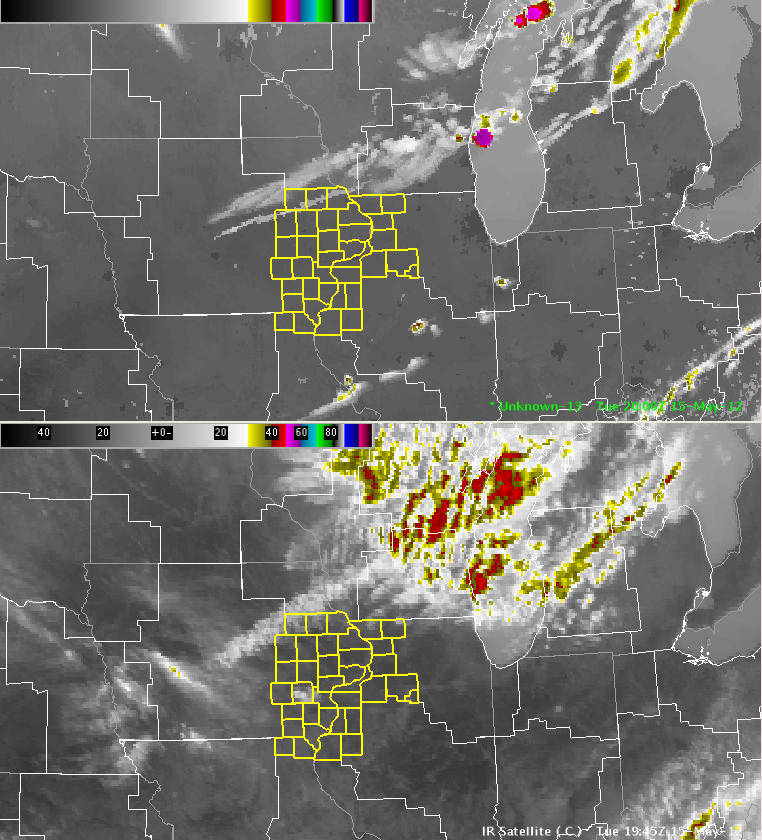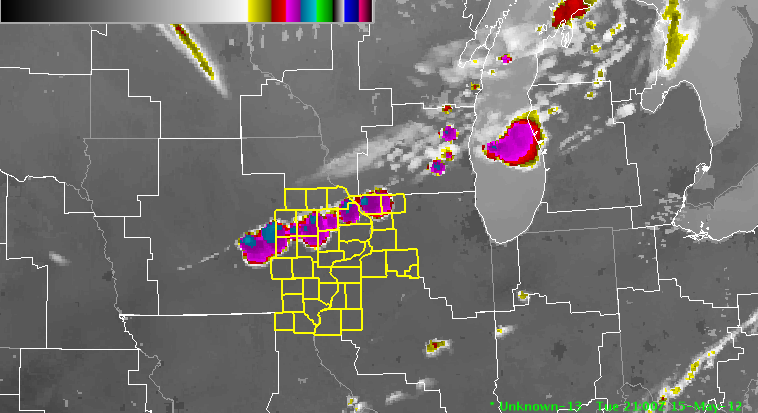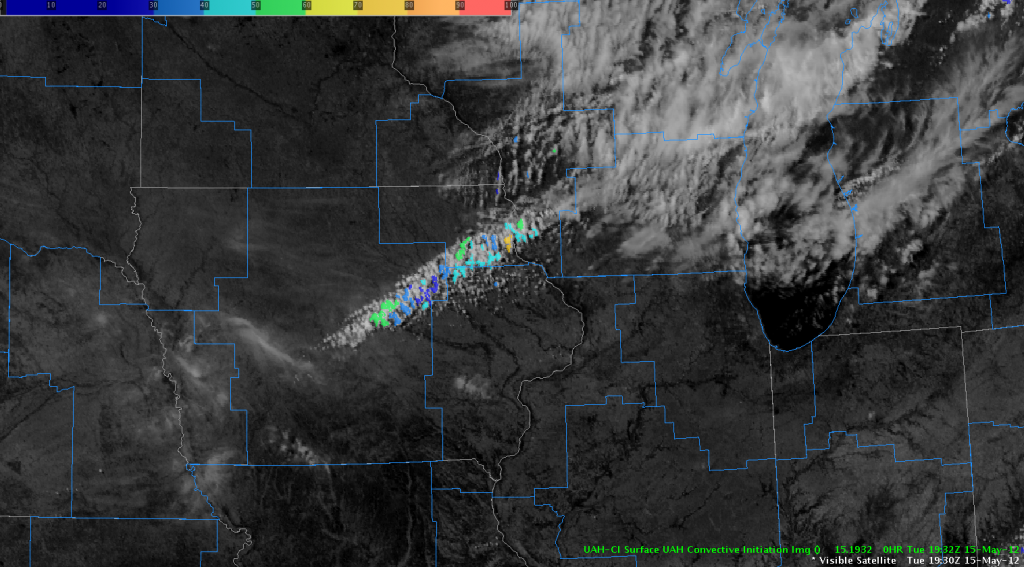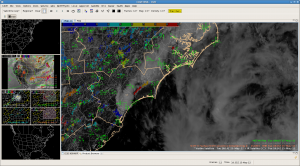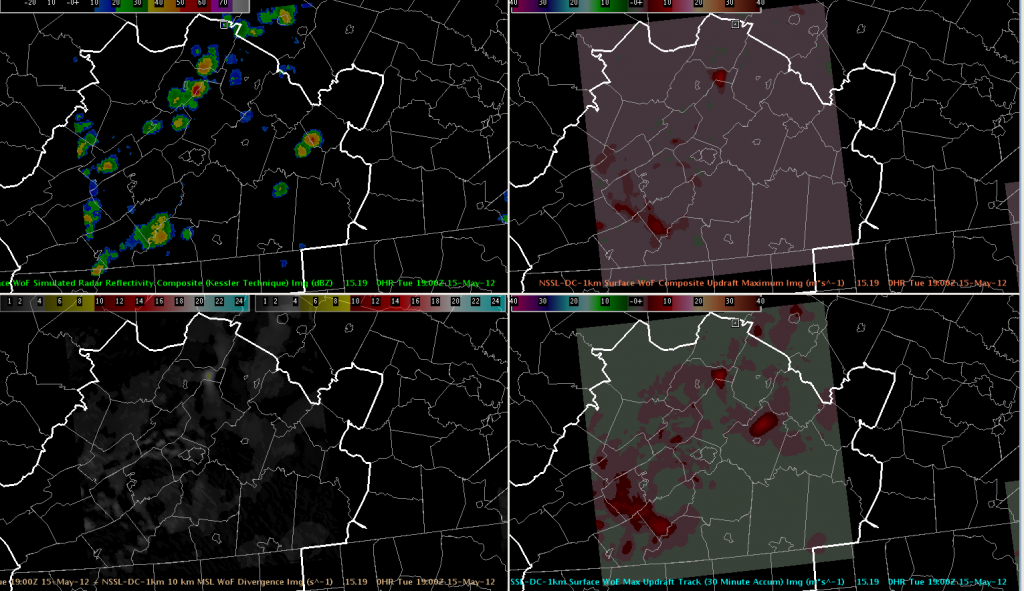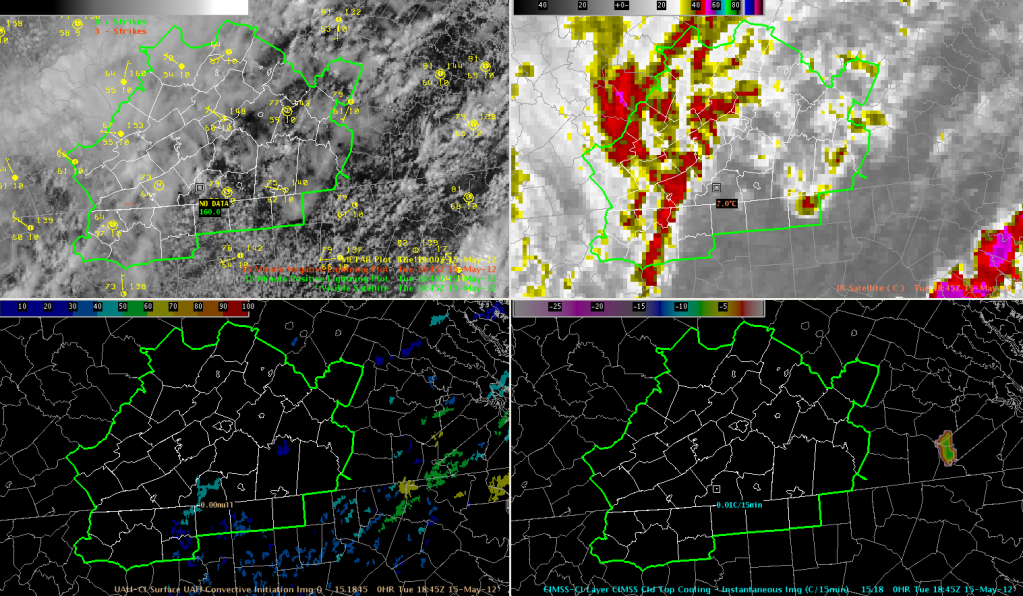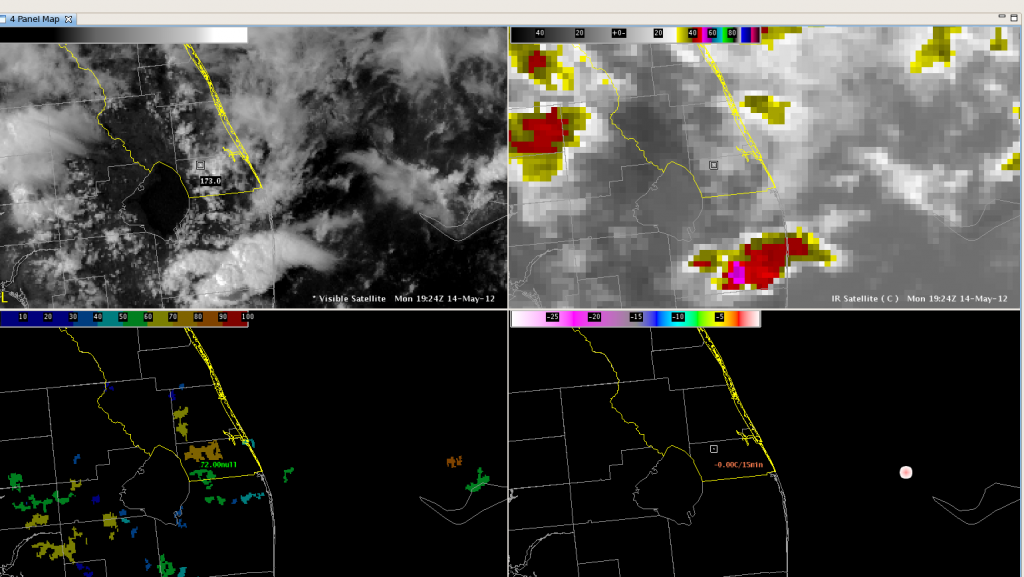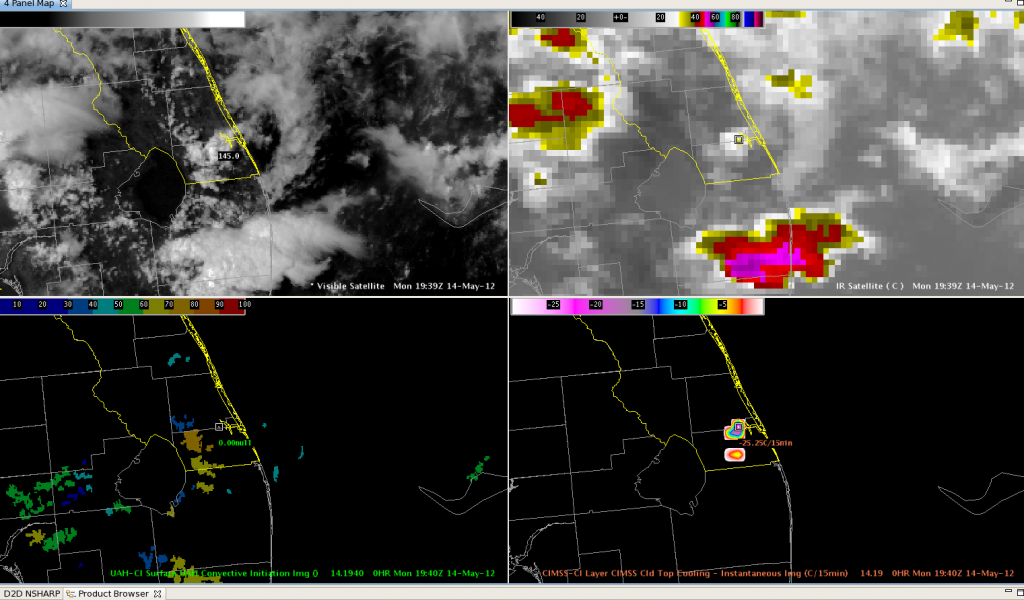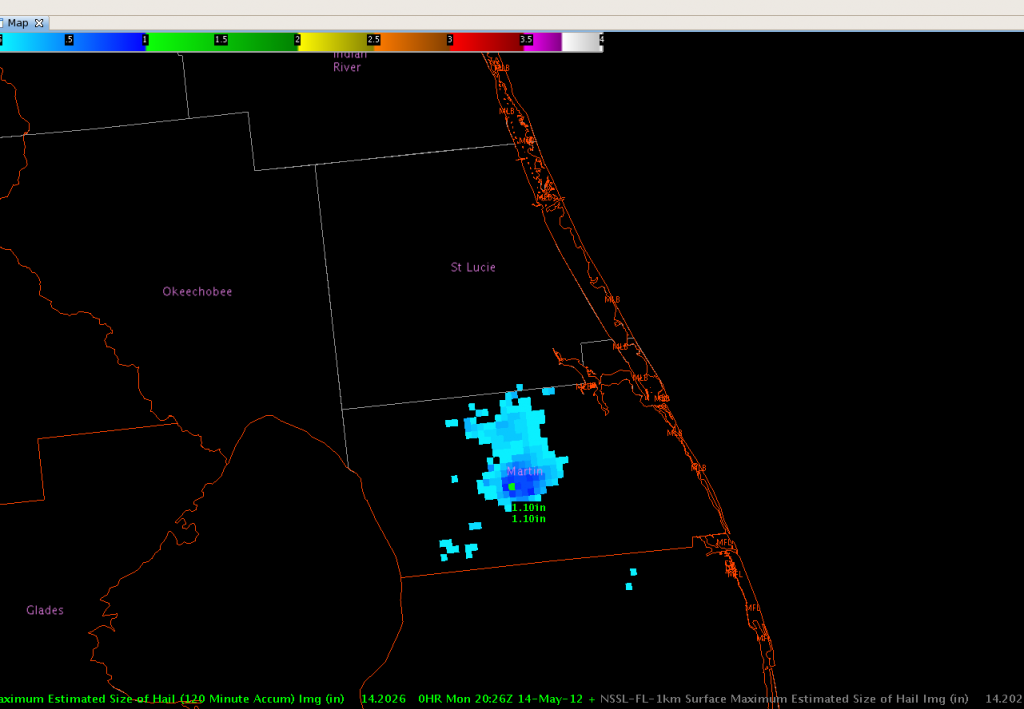A storm cell over Volusia County, Florida apparently ran over a sea-breeze front and developed a lot of rotation. A hook echo on the reflectivity and strong gate to gate shear was quite evident on Melbourne’s radar. We had been monitoring MRMS data including reflectivities at -10C and -20C. Looking back at Convective Initiation, there was a strong signal at 2154z.
Twenty minutes later the satellite picture and NLDN lightning data looked like this:
MRMS data at 2224z showed 57 dbz echoes at the -10C level.
By 2225z, velocity data from Melbourne’s radar compelled us to issue a tornado warning. Time from the first Convective Initiation signal to issuing the warning was 30 minutes.
After issuing the warning, we got the 3DVAR domains set up properly and here is a screen capture of the 2km vorticity and winds for the storm of interest.
Here is a four panel of various 3DVAR data for the storm at 2230z.
At the top of the hour, the storm was still quite organized, and a second tornado warning was issued.
Dankers/Ruthford


